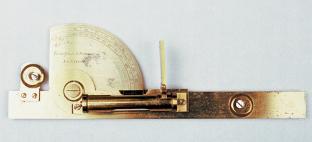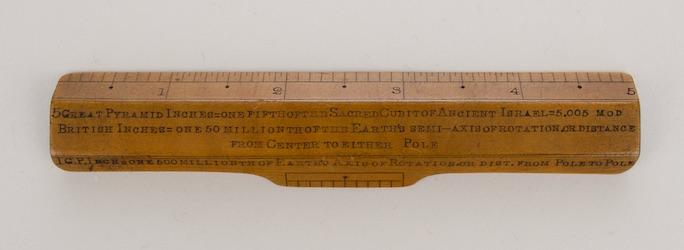Charles Piazzi Smyth travelled to Giza in 1864 to measure the Great Pyramid. He had read and admired theories linking the Pyramid with revelations in the Old Testament concerning a ‘sacred cubit’ used by Noah.
This unit, it was argued, was 1/20,000,000th of the earth’s axis of rotation (distance pole to pole), and had been recorded in the shape of the pyramid as a material trace deliberately left by its ancient-Israelite builders. Piazzi Smyth sought to verify these theories, and link them to British imperial units of measurement.
Upon arriving in Egypt, Piazzi Smyth found that his instruments were poorly made and his measuring rods warped in the dry heat.
Needing a reliable standard against which to calibrate his measuring tools, he improvised by plundering a lump of basalt from the Pyramid’s pavement. The stone was ground smooth by “Alee, the day-guard”, and then marked by Piazzi Smyth with a 5-inch scale using his wife’s diamond ring (Image 1).
Piazzi Smyth described the process in his official report of the expedition:
“Alee … was burning with anxiety to turn an extra penny in any honest manner, and could use his hands well, though not his feet. … So at once the poor worthy man began with his tedious grinding, circulating the upper stone as regularly as if his arms had been part of a speculum-grinding machine … with such untiring perseverance, from another sunrise to another sunset … a surface was at length obtained on which fine engraved lines could be creditably placed.”(1)
After use as a reference standard in Egypt, the scale was then taken back to Edinburgh and precisely measured, and all Piazzi Smyth’s data adjusted accordingly.







